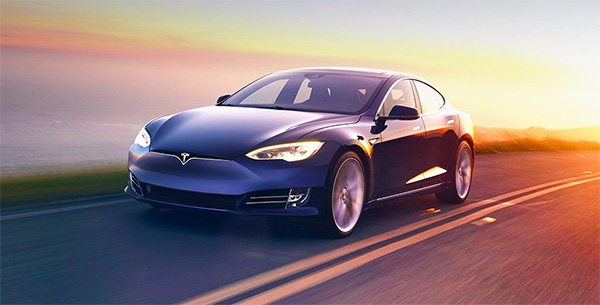At a press call today, Tesla unveiled a major upgrade to the self-driving hardware that it packs into its cars, promising that all cars being produced from here on out will come packed with the improved setup, allowing for full self-driving capability. This includes the recently-released Model 3 sedan. Upgraded Model S and Model X variants are already available for purchase.
The new hardware, which features eight cameras (seven more than first-gen Autopilot hardware), 12 ultrasonic sensors, and a forward-facing radar, is claimed to offer “a safety level substantially greater than that of a human driver.”

The upgraded system, with its eight surround cameras, will offer “360-degree visibility” at a maximum distance of 250 meters. The 12 ultrasonic sensors are meant to enhance the setup’s surround-sight with object detection at approximately twice the range, while the front-facing radar can provide vision through “heavy rain, fog, dust and even the car ahead.” At the helm of this all is Tesla’s new Neural Net, running on an onboard computer 40 times more powerful than that of the first-gen system.
While all Tesla cars currently in production are set to receive the upgrade, existing Tesla owners will have to make do without it. New owners too will have to wait a while before the improved autonomous driving system is available for use, with Tesla intending to have the system run in “shadow mode” initially, calibrating it with real-world data from thousands of cars driving over millions of miles in different locations.
In said mode, the self-driving hardware will simply be recording incidences where it would have taken action, say, to avoid an obstacle. The company will then be able to tally this data with accidents to improve the software driving the system and eventually activate it, as before, using OTA updates. Till that time, however, new Teslas will lack certain safety features available in current-gen models. These include automatic emergency breaking, collision warning, lane holding and active cruise control.
The move comes after Tesla came under fire following a fatal accident involving a Model S that had Autopilot engaged. Discussing the future of Autopilot in light of safety concerns, CEO Elon Musk revealed plans to make the system reliable enough for a completely autonomous trip from Los Angeles to New York by the end of 2017. The aim is to have the car travel the entire distance, recharge and park itself without a single input from the driver.
(Source: Tesla | Additional info via: The Verge)
You can follow us on Twitter, add us to your circle on Google+ or like our Facebook page to keep yourself updated on all the latest from Microsoft, Google, Apple and the web.
